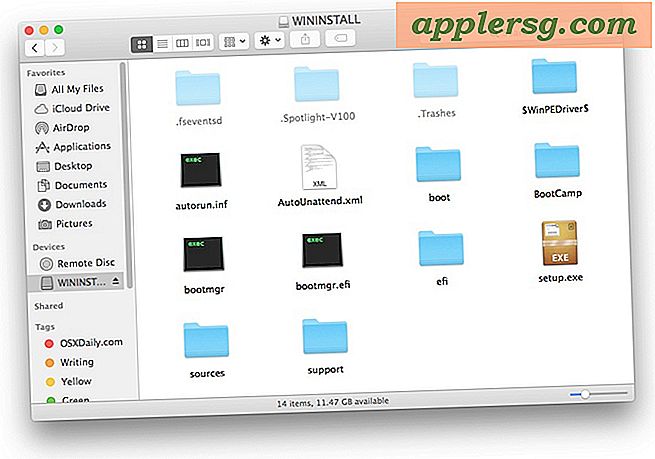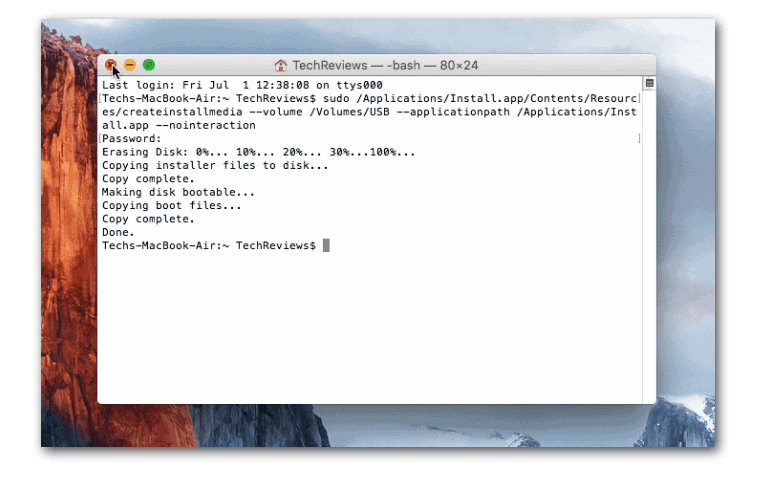

- CREATE USB BOOT DRIVE FOR MAC OSX HOW TO
- CREATE USB BOOT DRIVE FOR MAC OSX MAC OS X
- CREATE USB BOOT DRIVE FOR MAC OSX DOWNLOAD
CREATE USB BOOT DRIVE FOR MAC OSX MAC OS X
If you ever had problems with your Mac OS X installation you know that the first thing you should do is to check the startup volume using Disk Utility.Īfter the check has ended and, if the errors exceed a certain level of seriousness, the Disk Utility application will require you to restart your Mac and use its Mac OS X Install disc counterpart. To use this tutorial an 8 GB or larger USB stick, a second Mac computer with a working SuperDrive or a Mac OS X Install disc DMG file will be needed. This might be needed if your Mac needs a reinstall or a “Repair Disk” procedure and it has problems reading the bundled Install disc. Going back to the mounted Install ESD.This article will allow you to learn the necessary steps for creating your own bootable Mac OS X Leopard (or Lion) image on a USB memory stick.Navigate the file structure to System | Installation and delete the alias to the Packages directory ( Figure J) Once the files have finished copying over, the drive should mount automatically.The process may indicate in excess of one hour, but in my experience, the process takes significantly less time to complete ( Figure I).Upon verifying that the fields are correct, click the Restore button and select Erase from the application, if prompted to do so ( Figure H).For Destination, drag and drop the partition created on the USB drive onto the textbox ( Figure G) Drag the BaseSystem.dmg over to the Source text box.Go back to Disk Utility and click on the newly formatted USB Drive in the menu, then click on the Restore tab.dmg file and locate the hidden BaseSystem.dmg ( Figure F)

Navigate the file structure Contents | Shared Support and double-click the InstallESD.dmg file mount OS X Install ESD on the desktop ( Figure E).Right-click the file and select Show Package Contents ( Figure D) Upon completion of the USB formatting, locate Install Mac OS X Mavericks.app (downloaded in step #1 to the Applications folder, by default).Launch the Terminal.app by selecting it from the /Applications | Utilities folder and execute the following command ( Figure C)*:ĭefaults write AppleShowAllFiles TRUE \killall Finder \say Files Revealed.Click on the Options button, select the radio button for GUID Partition Table, and click OK ( Figure B).Select Mac OS Extended (Journaled) for the format-type from the drop-down menu ( Figure A).Click the drop-down menu, selecting 1 partition.Click on the USB drive from the left-hand menu and select the Partition tab.Insert the USB drive into the Mac and launch Disk Utility.
CREATE USB BOOT DRIVE FOR MAC OSX DOWNLOAD
Using a Mac with at least OS X 10.6.8 installed, access the Mac App Store and download the Mavericks (10.9) app installer.User Account with Administrative privileges.Apple computer with Mac App Store (OS X 10.6.8+).Install OS X Mavericks.app (installer downloaded from Mac App Store).Creating a USB Installer for Apple OS X 10.9īefore proceeding, you'll need the following items to complete the process: However, the focus of this article is the change in the process for creating a working, bootable USB drive. The latest iteration of OS X, version 10.9 (aka Mavericks), marks not only 200+ changes in the OS, but also does away with the fabled "big cat" naming scheme.

CREATE USB BOOT DRIVE FOR MAC OSX HOW TO
In April, I wrote an article on TechRepublic about how to create a bootable USB to install OS X.


 0 kommentar(er)
0 kommentar(er)
